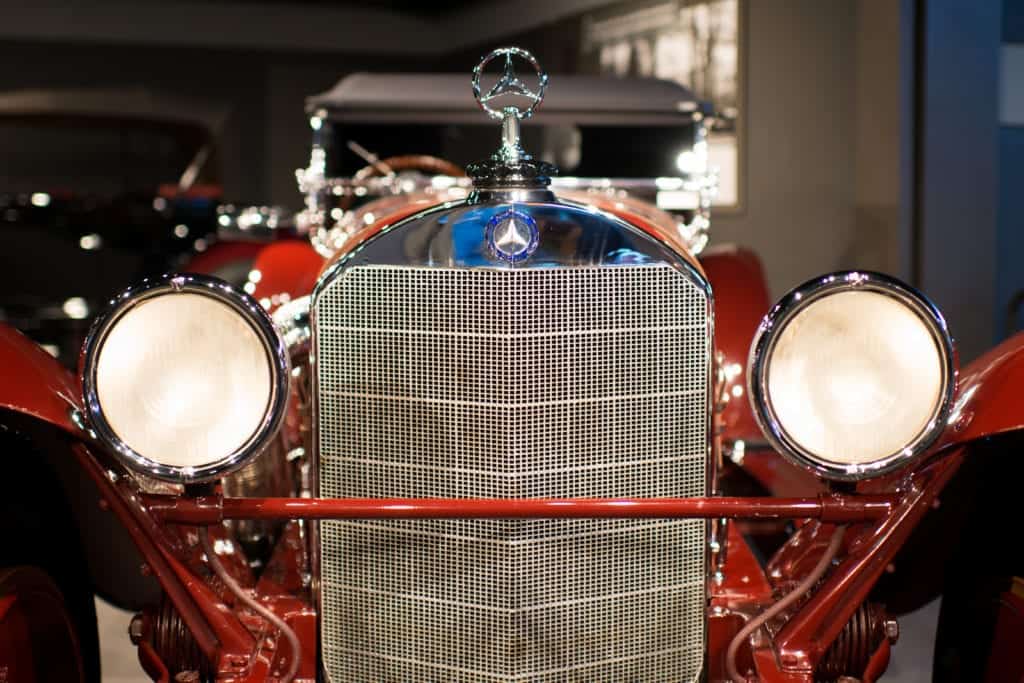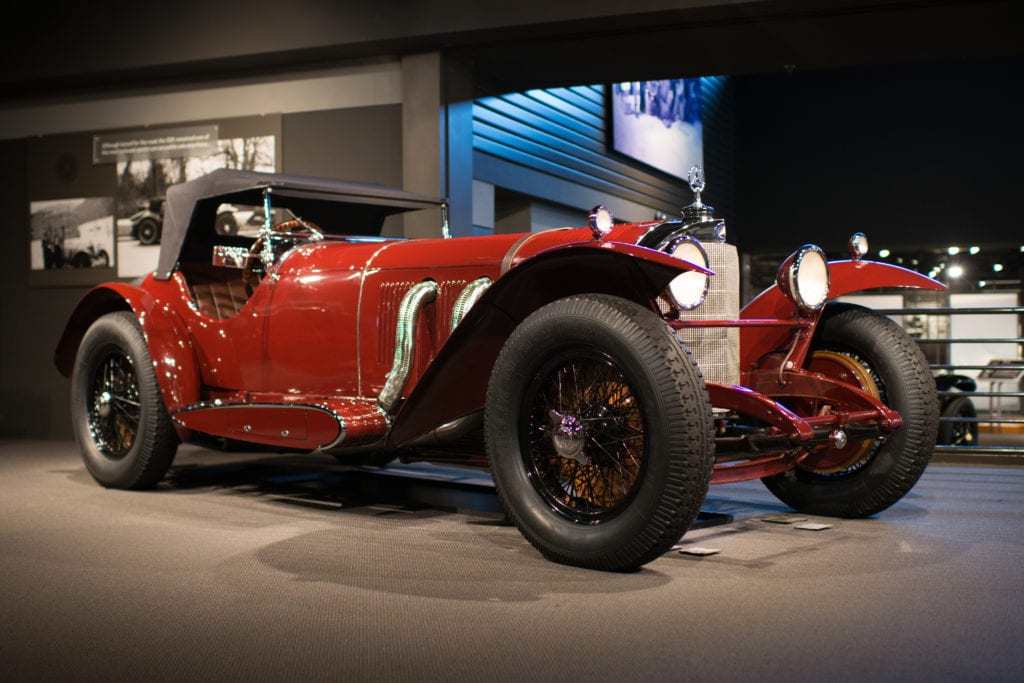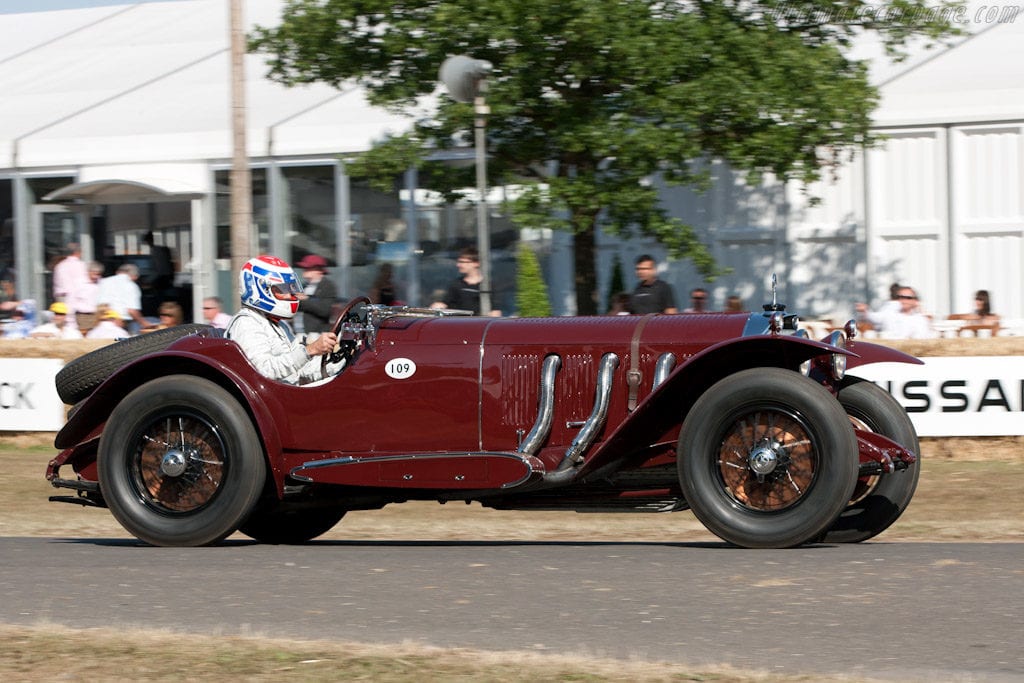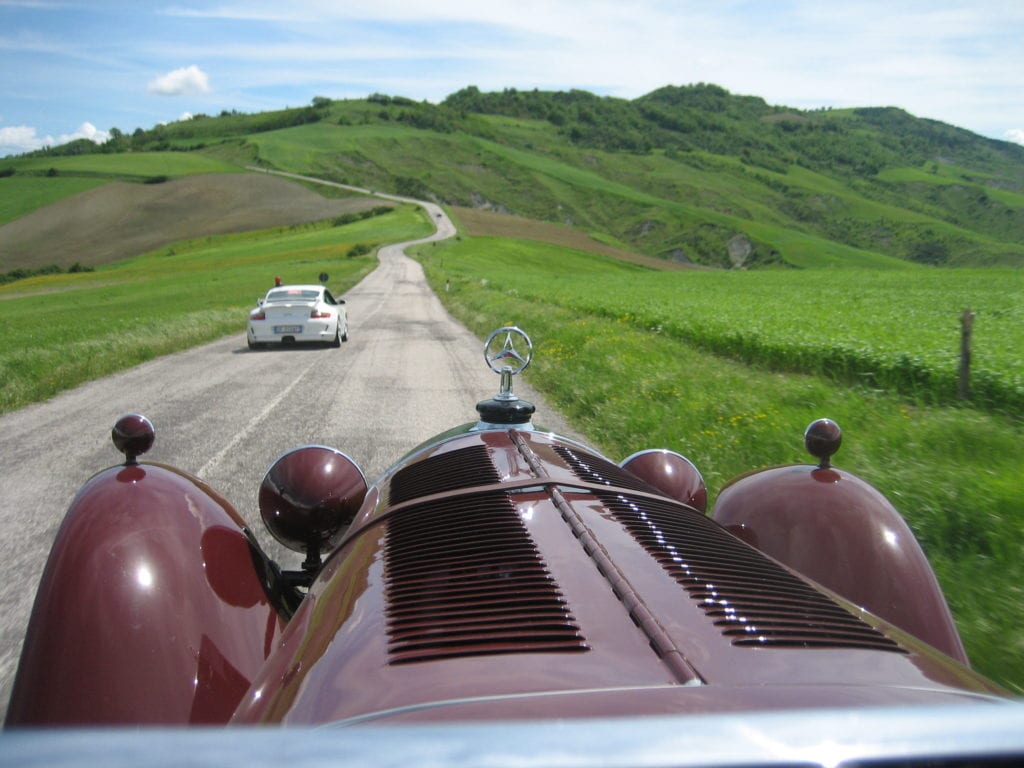Behind the Headlights: 1929 Mercedes-Benz SSK

If asked about the most desirable Porsche, some collectors might cite the Porsche 356 Speedster, which helped establish the Porsche legend, or the nearly unbeatable Porsche 917, which has been etched into the psyches of enthusiasts by Steve McQueen’s Le Mans.
Few would include the Mercedes Benz SSK, but this would be an oversight. While it does not display the Porsche name, the SSK bears the direct imprint of Dr. Ferdinand Porsche. It was the last car he personally designed as an engineer for Mercedes before he left under tempestuous terms to found his own company.

Within the Miles Collier Collections, the SSK represents the origins of Dr. Porsche’s unprecedented success in motorsport competition. It also provides a benchmark for comparison with the 21 additional Porsches displayed at Revs Institute.
The Porsche connection aside, the SSK is tremendously important in its own right. With only 31 made between 1929 and 1932, they are so rarely seen, let alone heard, that they have achieved mythical status among pre-war car enthusiasts. Along with the 540K and the Silver Arrow racers, it is the high-water mark for pre-war Mercedes engineering.
The SSK (and the subsequent lighter-weight SSKL, of which none survive), is the product of iterative engineering, namely the incremental improvement in the performance and handling of the Mercedes S-Type of 1927-29. For the SSK, the 6-cylinder S-Type engine was bored-out to 7 litres and supercharged, while the chassis was shortened by 18 inches to improve handling dramatically.
These modifications enabled Mercedes factory driver Rudolf ‘Rudi’ Caracciola to win 26 hill-climb victories in the car over a two-year period. Caracciola also led in the inaugural Monaco Grand Prix in an SSK in 1929, but a pair of Bugattis sailed to victory while the heavier car was in the pits for gas and tires.

The SSK’s design proportions almost veer into caricature, with its endlessly long hood and a body that seemingly ends after the rear axle. The shape has been immortalized in the “neoclassic” Excalibur, which the average enthusiast is far more likely to encounter than an actual SSK.
The SSK’s most memorable feature is the piercing howl from the its supercharger, which activates only on full-throttle. For younger generations, the supercharger’s effect can be likened to the depiction of nitrous oxide in the original The Fast & The Furious film. The push of a button gives the car an instant boost in horsepower that feels like getting rear-ended by a fast-moving train.
That suited the first owner of this particular SSK, who told her dealer she wanted “the fastest car in England.” Dorothy Paget was described by her biographer, Quintin Gilby, as “enormously rich, impossibly difficult and invariably eccentric.” She maintained an all-female staff to attend to her every whim, with each secretary told to wear only clothes of a specific color, except for green because she considered it bad luck. Paget would then address her secretaries only by their assigned color.
Paget had her SSK painted Midland Red, the same shade the car is in now. The dark red paint matched the color of the locomotives operated by the Midland Railway, of which her father, Almeric Hugh Paget, 1st Baron Queenborough, was part owner. Imagine seeing her SSK racing a matching Midland steam-engine along an English country road.

Paget’s dalliance with motor racing was noteworthy but short-lived. After an exhilarating ride with Tim Birkin, one of the original “Bentley Boys,” she agreed to fund his racing efforts for the 1930 season, thereby becoming the first female racing team owner in England. Paget bought three Bentleys for the team, but after disappointing results she pulled her support. Some say the real reason she lost interest was because she could not gamble on the races.
Paget’s real love was horseracing. She owned a massive stable of successful thoroughbreds, and she loved to bet on races. She became such a profligate gambler that, later in life, she was afforded the rare privilege of being able to bet on horse races after they occurred. Paget merely gave her word to the bookkeeper that she had not heard the results. He allowed this primarily because her losing record seemed to show she was telling the truth.
Paget did not own her Mercedes SSK for very long. By 1934 it was back in the hands of her dealer, David Scott-Moncrieff. He “drove the wheels” off it until WWII, after which, the car made its way to America and into the hands of American collector and racer Briggs Cunningham. He knew how good the car would be because he had purchased a brand-new 1929 Mercedes SS two-door phaeton for his honeymoon. Rudi Caracciola himself drove the car into Paris to hand off the keys to the newlyweds.
Miles Collier acquired the SSK when he purchased the entire Briggs Cunningham car collection in 1987. By that point, the vehicle’s body had been modified and repainted white to match the other factory Mercedes SSK race cars. With the help of noted restorer T.E. Berrisford, the original Barker coachbuilt body was re-fabricated and the drivetrain was restored. Mike Riley, of Bakewell, England was the panel and body shop responsible for the cosmetic achievement.
In 2008, after the restoration was completed, the SSK won the Mercedes-Benz Trophy for the most significant example of the marque at the Pebble Beach Concours d’Elegance.
In 2010, L. Scott George, President of the Collier Collection drove the car in Italy’s Mille Miglia Storica with restorer Eddie Berrisford. For George, “the sheer power and presence of the SSK on the amazing Mille route, along with the unique sound made from the blower as the throttle is fully depressed, is something you will never forget. Especially in the narrow passes and road stretches, where the echo allows a haunting effect.”


